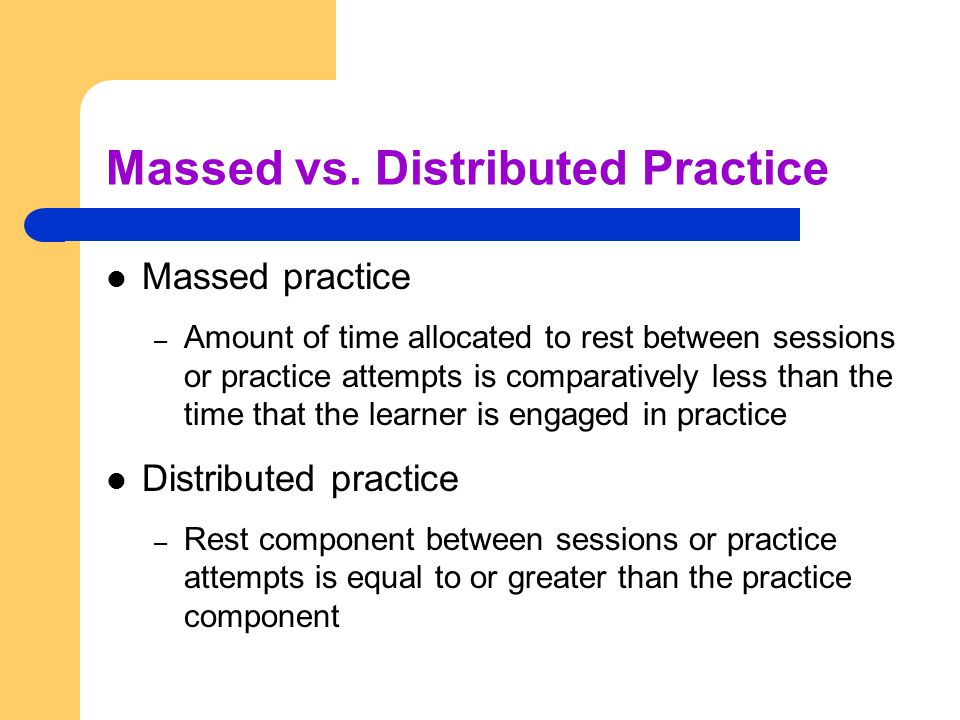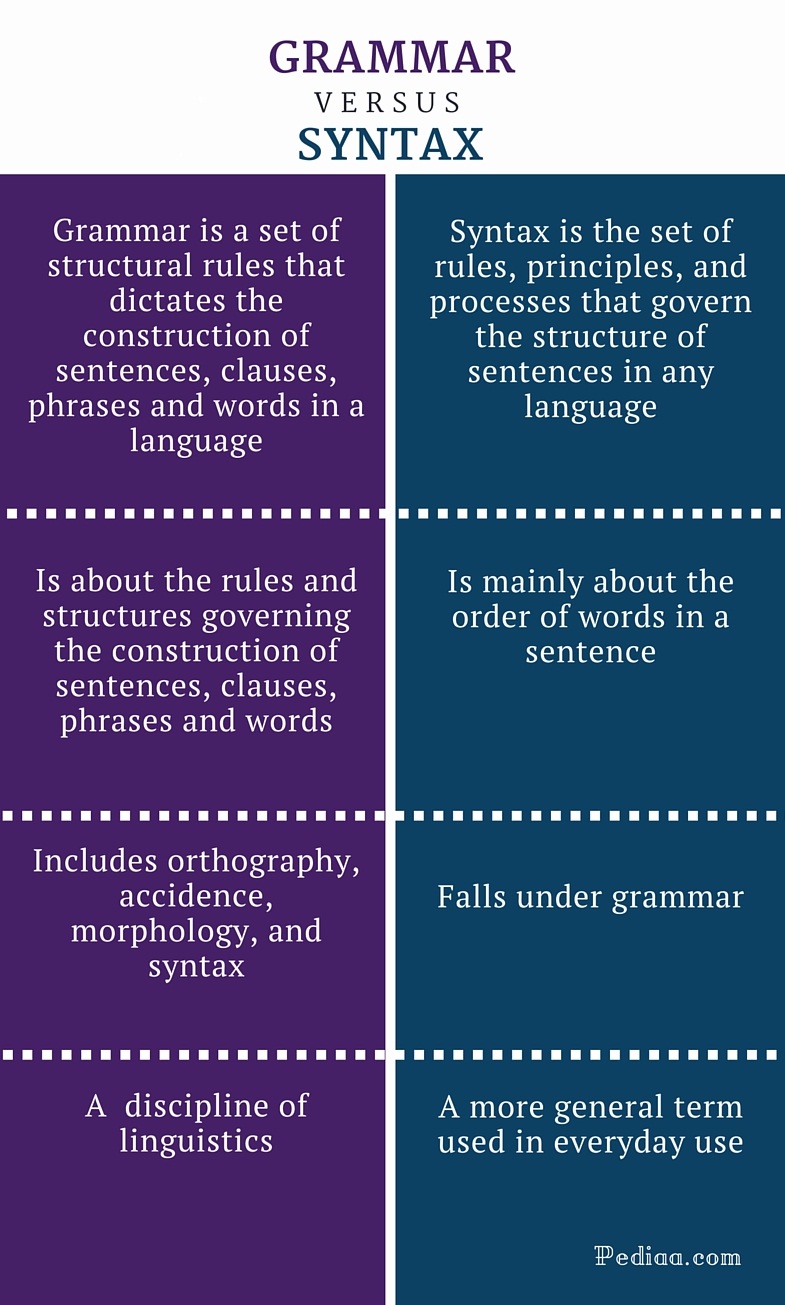
The Role of SLPs in Comprehensive Assessment and Treatment of Language, Literacy and Executive Functions


 Last year an esteemed colleague, Dr. Roseberry-McKibbin posed this question in our Bilingual SLPs Facebook Group: “Is anyone working on morphological awareness in therapy with ELLs (English Language Learners) with language disorders?”
Last year an esteemed colleague, Dr. Roseberry-McKibbin posed this question in our Bilingual SLPs Facebook Group: “Is anyone working on morphological awareness in therapy with ELLs (English Language Learners) with language disorders?”
Her question got me thinking: “How much time do I spend on treating morphological awareness in therapy with monolingual and bilingual language disordered clients?” The answer did not make me happy!
So what is morphological awareness and why is it important to address when treating monolingual and bilingual language impaired students?
Morphemes are the smallest units of language that carry meaning. They can be free (stand alone words such as ‘fair’, ‘toy’, or ‘pretty’) or bound (containing prefixes and suffixes that change word meanings – ‘unfair’ or ‘prettier’).
Morphological awareness refers to a ‘‘conscious awareness of the morphemic structure of words and the ability to reflect on and manipulate that structure’’ (Carlisle, 1995, p. 194). Also referred to as “the study of word structure” (Carlisle, 2004), it is an ability to recognize, understand, and use affixes or word parts (prefixes, suffixes, etc) that “carry significance” when speaking as well as during reading tasks. It is a hugely important skill for building vocabulary, reading fluency and comprehension as well as spelling (Apel & Lawrence, 2011; Carlisle, 2000; Binder & Borecki, 2007; Green, 2009).
So why is teaching morphological awareness important? Let’s take a look at some research.
Goodwin and Ahn (2010) found morphological awareness instruction to be particularly effective for children with speech, language, and/or literacy deficits. After reviewing 22 studies Bowers et al. (2010) found the most lasting effect of morphological instruction was on readers in early elementary school who struggled with literacy.
Morphological awareness instruction mediates and facilitates vocabulary acquisition leading to improved reading comprehension abilities (Bowers & Kirby, 2010; Carlisle, 2003, 2010; Guo, Roehrig, & Williams, 2011; Tong, Deacon, Kirby, Cain, & Parilla, 2011).

Unfortunately as important morphological instruction is for vocabulary building, reading fluency, reading comprehension, and spelling, it is often overlooked during the school years until it’s way too late. For example, traditionally morphological instruction only beings in late middle school or high school but research actually found that in order to be effective one should actually begin teaching it as early as first grade (Apel & Lawrence, 2011).
So now that we know that we need to target morphological instruction very early in children with language deficits, let’s talk a little bit regarding how morphological awareness can be assessed in language impaired learners.
When it comes to standardized testing, both the Test of Language Development: Intermediate – Fourth Edition (TOLD-I:4) and the Test of Adolescent and Adult Language–Fourth Edition (TOAL-4) have subtests which assess morphology as well as word derivations. However if you do not own either of these tests you can easily create non-standardized tasks to assess morphological awareness.
Apel, Diehm, & Apel (2013) recommend multiple measures which include: phonological awareness tasks, word level reading tasks, as well as reading comprehension tasks.
Below are direct examples of tasks from their study:
One can test morphological awareness via production or decomposition tasks. In a production task a student is asked to supply a missing word, given the root morpheme (e.g., ‘‘Sing. He is a great _____.’’ Correct response: singer). A decomposition task asks the student to identify the correct root of a given derivation or inflection. (e.g., ‘‘Walker. How slow can she _____?’’ Correct response: walk).
Another way to test morphological awareness is through completing analogy tasks since it involves both decomposition and production components (provide a missing word based on the presented pattern—crawl: crawled:: fly: ______ (flew).
Still another way to test morphological awareness with older students is through deconstruction tasks: Tell me what ____ word means? How do you know? (The student must explain the meaning of individual morphemes).
Finding the affix: Does the word ______ have smaller parts?
So what are the components of effective morphological instruction you might ask?
Below is an example of a ‘Morphological Awareness Intervention With Kindergarteners and First and Second Grade Students From Low SES Homes’ performed by Apel & Diehm, 2013:
Here are more ways in which this can be accomplished with older children:
Now that you know about the importance of morphological awareness, will you be incorporating it into your speech language sessions? I’d love to know!
Until then, Happy Speeching!

References:
Several years ago I wrote a post about how to perform clinical reading assessments of adolescent students. Today I am writing a follow-up post with a focus on the clinical reading assessment of elementary-aged students. For this purpose, I often use the books from the Continental Press series entitled: Content Reading for Geography, Social Studies, & Science. Texts for grades 2-7 of the series are perfect for assessment of struggling elementary-aged readers. Continue reading Clinical Assessment of Reading Abilities of Elementary Aged Children
 Three years ago I wrote a blog post entitled: “Special Education Disputes and Comprehensive Language Testing: What Parents, Attorneys, and Advocates Need to Know“. In it, I used 4 very different scenarios to illustrate the importance of comprehensive language evaluations for children with subtle language and learning needs. Today I would like to expound more on that post in order to explain, what actually constitutes a good independent comprehensive assessment. Continue reading What Makes an Independent Speech-Language-Literacy Evaluation a GOOD Evaluation?
Three years ago I wrote a blog post entitled: “Special Education Disputes and Comprehensive Language Testing: What Parents, Attorneys, and Advocates Need to Know“. In it, I used 4 very different scenarios to illustrate the importance of comprehensive language evaluations for children with subtle language and learning needs. Today I would like to expound more on that post in order to explain, what actually constitutes a good independent comprehensive assessment. Continue reading What Makes an Independent Speech-Language-Literacy Evaluation a GOOD Evaluation?
 Two years ago I wrote a blog post entitled: “What’s Memes Got To Do With It?” which summarized key points of Dr. Alan G. Kamhi’s 2004 article: “A Meme’s Eye View of Speech-Language Pathology“. It delved into answering the following question: “Why do some terms, labels, ideas, and constructs [in our field] prevail whereas others fail to gain acceptance?”.
Two years ago I wrote a blog post entitled: “What’s Memes Got To Do With It?” which summarized key points of Dr. Alan G. Kamhi’s 2004 article: “A Meme’s Eye View of Speech-Language Pathology“. It delved into answering the following question: “Why do some terms, labels, ideas, and constructs [in our field] prevail whereas others fail to gain acceptance?”.
Today I would like to reference another article by Dr. Kamhi written in 2014, entitled “Improving Clinical Practices for Children With Language and Learning Disorders“.
This article was written to address the gaps between research and clinical practice with respect to the implementation of EBP for intervention purposes.
Dr. Kamhi begins the article by posing 10 True or False questions for his readers:
Guess what? Only statement 8 of the above quiz is True! Every other statement from the above is FALSE!
Now, let’s talk about why that is!
 First up is the concept of learning vs. generalization. Here Dr. Kamhi discusses that some clinicians still possess an “outdated behavioral view of learning” in our field, which is not theoretically and clinically useful. He explains that when we are talking about generalization – what children truly have a difficulty with is “transferring narrow limited rules to new situations“. “Children with language and learning problems will have difficulty acquiring broad-based rules and modifying these rules once acquired, and they also will be more vulnerable to performance demands on speech production and comprehension (Kamhi, 1988)” (93). After all, it is not “reasonable to expect children to use language targets consistently after a brief period of intervention” and while we hope that “language intervention [is] designed to lead children with language disorders to acquire broad-based language rules” it is a hugely difficult task to undertake and execute.
First up is the concept of learning vs. generalization. Here Dr. Kamhi discusses that some clinicians still possess an “outdated behavioral view of learning” in our field, which is not theoretically and clinically useful. He explains that when we are talking about generalization – what children truly have a difficulty with is “transferring narrow limited rules to new situations“. “Children with language and learning problems will have difficulty acquiring broad-based rules and modifying these rules once acquired, and they also will be more vulnerable to performance demands on speech production and comprehension (Kamhi, 1988)” (93). After all, it is not “reasonable to expect children to use language targets consistently after a brief period of intervention” and while we hope that “language intervention [is] designed to lead children with language disorders to acquire broad-based language rules” it is a hugely difficult task to undertake and execute.
Next, Dr. Kamhi addresses the issue of instructional factors, specifically the importance of “varying conditions of instruction and practice“. Here, he addresses the fact that while contextualized instruction is highly beneficial to learners unless we inject variability and modify various aspects of instruction including context, composition, duration, etc., we ran the risk of limiting our students’ long-term outcomes.
 After that, Dr. Kamhi addresses the concept of distributed practice (spacing of intervention) and how important it is for teaching children with language disorders. He points out that a number of recent studies have found that “spacing and distribution of teaching episodes have more of an impact on treatment outcomes than treatment intensity” (94).
After that, Dr. Kamhi addresses the concept of distributed practice (spacing of intervention) and how important it is for teaching children with language disorders. He points out that a number of recent studies have found that “spacing and distribution of teaching episodes have more of an impact on treatment outcomes than treatment intensity” (94).
He also advocates reducing evaluative feedback to learners to “enhance long-term retention and generalization of motor skills“. While he cites research from studies pertaining to speech production, he adds that language learning could also benefit from this practice as it would reduce conversational disruptions and tunning out on the part of the student.
From there he addresses the limitations of repetition for specific tasks (e.g., text rereading). He emphasizes how important it is for students to recall and retrieve text rather than repeatedly reread it (even without correction), as the latter results in a lack of comprehension/retention of read information.
After that, he discusses treatment intensity. Here he emphasizes the fact that higher dose of instruction will not necessarily result in better therapy outcomes due to the research on the effects of “learning plateaus and threshold effects in language and literacy” (95). We have seen research on this with respect to joint book reading, vocabulary words exposure, etc. As such, at a certain point in time increased intensity may actually result in decreased treatment benefits.
 His next point against processing interventions is very near and dear to my heart. Those of you familiar with my blog know that I have devoted a substantial number of posts pertaining to the lack of validity of CAPD diagnosis (as a standalone entity) and urged clinicians to provide language based vs. specific auditory interventions which lack treatment utility. Here, Dr. Kamhi makes a great point that: “Interventions that target processing skills are particularly appealing because they offer the promise of improving language and learning deficits without having to directly target the specific knowledge and skills required to be a proficient speaker, listener, reader, and writer.” (95) The problem is that we have numerous studies on the topic of improvement of isolated skills (e.g., auditory skills, working memory, slow processing, etc.) which clearly indicate lack of effectiveness of these interventions. As such, “practitioners should be highly skeptical of interventions that promise quick fixes for language and learning disabilities” (96).
His next point against processing interventions is very near and dear to my heart. Those of you familiar with my blog know that I have devoted a substantial number of posts pertaining to the lack of validity of CAPD diagnosis (as a standalone entity) and urged clinicians to provide language based vs. specific auditory interventions which lack treatment utility. Here, Dr. Kamhi makes a great point that: “Interventions that target processing skills are particularly appealing because they offer the promise of improving language and learning deficits without having to directly target the specific knowledge and skills required to be a proficient speaker, listener, reader, and writer.” (95) The problem is that we have numerous studies on the topic of improvement of isolated skills (e.g., auditory skills, working memory, slow processing, etc.) which clearly indicate lack of effectiveness of these interventions. As such, “practitioners should be highly skeptical of interventions that promise quick fixes for language and learning disabilities” (96).
Now let us move on to language and particularly the models we provide to our clients to encourage greater verbal output. Research indicates that when clinicians are attempting to expand children’s utterances, they need to provide well-formed language models. Studies show that children select strong input when its surrounded by weaker input (the surrounding weaker syllables make stronger syllables stand out). As such, clinicians should expand upon/comment on what clients are saying with grammatically complete models vs. telegraphic productions.
 From there lets us take a look at Dr. Kamhi’s recommendations for grammar and syntax. Grammatical development goes much further than addressing Brown’s morphemes in therapy and calling it a day. As such, it is important to understand that children with developmental language disorders (DLD) (#DevLang) do not have difficulty acquiring all morphemes. Rather studies have shown that they have difficulty learning grammatical morphemes that reflect tense and agreement (e.g., third-person singular, past tense, auxiliaries, copulas, etc.). As such, use of measures developed by Hadley & Holt, 2006; Hadley & Short, 2005 (e.g., Tense Marker Total & Productivity Score) can yield helpful information regarding which grammatical structures to target in therapy.
From there lets us take a look at Dr. Kamhi’s recommendations for grammar and syntax. Grammatical development goes much further than addressing Brown’s morphemes in therapy and calling it a day. As such, it is important to understand that children with developmental language disorders (DLD) (#DevLang) do not have difficulty acquiring all morphemes. Rather studies have shown that they have difficulty learning grammatical morphemes that reflect tense and agreement (e.g., third-person singular, past tense, auxiliaries, copulas, etc.). As such, use of measures developed by Hadley & Holt, 2006; Hadley & Short, 2005 (e.g., Tense Marker Total & Productivity Score) can yield helpful information regarding which grammatical structures to target in therapy.
With respect to syntax, Dr. Kamhi notes that many clinicians erroneously believe that complex syntax should be targeted when children are much older. The Common Core State Standards do not help this cause further, since according to the CCSS complex syntax should be targeted 2-3 grades, which is far too late. Typically developing children begin developing complex syntax around 2 years of age and begin readily producing it around 3 years of age. As such, clinicians should begin targeting complex syntax in preschool years and not wait until the children have mastered all morphemes and clauses (97)
Finally, Dr. Kamhi wraps up his article by offering suggestions regarding prioritizing intervention goals. Here, he explains that goal prioritization is affected by
He provides a hypothetical case scenario in which the teaching responsibilities are divvied up between three professionals, with SLP in charge of targeting narrative discourse. Here, he explains that targeting narratives does not involve targeting sequencing abilities. “The ability to understand and recall events in a story or script depends on conceptual understanding of the topic and attentional/memory abilities, not sequencing ability.” He emphasizes that sequencing is not a distinct cognitive process that requires isolated treatment. Yet many SLPs “continue to believe that sequencing is a distinct processing skill that needs to be assessed and treated.” (99)
 Dr. Kamhi supports the above point by providing an example of two passages. One, which describes a random order of events, and another which follows a logical order of events. He then points out that the randomly ordered story relies exclusively on attention and memory in terms of “sequencing”, while the second story reduces demands on memory due to its logical flow of events. As such, he points out that retelling deficits seemingly related to sequencing, tend to be actually due to “limitations in attention, working memory, and/or conceptual knowledge“. Hence, instead of targeting sequencing abilities in therapy, SLPs should instead use contextualized language intervention to target aspects of narrative development (macro and microstructural elements).
Dr. Kamhi supports the above point by providing an example of two passages. One, which describes a random order of events, and another which follows a logical order of events. He then points out that the randomly ordered story relies exclusively on attention and memory in terms of “sequencing”, while the second story reduces demands on memory due to its logical flow of events. As such, he points out that retelling deficits seemingly related to sequencing, tend to be actually due to “limitations in attention, working memory, and/or conceptual knowledge“. Hence, instead of targeting sequencing abilities in therapy, SLPs should instead use contextualized language intervention to target aspects of narrative development (macro and microstructural elements).
Furthermore, here it is also important to note that the “sequencing fallacy” affects more than just narratives. It is very prevalent in the intervention process in the form of the ubiquitous “following directions” goal/s. Many clinicians readily create this goal for their clients due to their belief that it will result in functional therapeutic language gains. However, when one really begins to deconstruct this goal, one will realize that it involves a number of discrete abilities including: memory, attention, concept knowledge, inferencing, etc. Consequently, targeting the above goal will not result in any functional gains for the students (their memory abilities will not magically improve as a result of it). Instead, targeting specific language and conceptual goals (e.g., answering questions, producing complex sentences, etc.) and increasing the students’ overall listening comprehension and verbal expression will result in improvements in the areas of attention, memory, and processing, including their ability to follow complex directions.
 There you have it! Ten practical suggestions from Dr. Kamhi ready for immediate implementation! And for more information, I highly recommend reading the other articles in the same clinical forum, all of which possess highly practical and relevant ideas for therapeutic implementation. They include:
There you have it! Ten practical suggestions from Dr. Kamhi ready for immediate implementation! And for more information, I highly recommend reading the other articles in the same clinical forum, all of which possess highly practical and relevant ideas for therapeutic implementation. They include:
References:
Kamhi, A. (2014). Improving clinical practices for children with language and learning disorders. Language, Speech, and Hearing Services in Schools, 45(2), 92-103
Helpful Social Media Resources:
Today I am reviewing a fairly recently released (2014) book from the Learning By Design, Inc. team entitled SPELL-Links Strategies by Numbers. This 57 page instructional guide was created to support the implementation of the SPELL-Links to Reading and Writing Word Study Curriculum as well as to help students “use the SPELL-Links strategies anytime in any setting.’ (p. iii) Its purpose is to enable students to strategize their way to writing and reading rather than overrelying on memorization techniques.
SPELL-Links Strategies by Numbers contains in-depth explanations of SPELL-Links’ 14 strategies for spelling and reading, detailed instructions on how to teach the strategies during writing and reading activities, as well as helpful ideas for supporting students as they further acquire literacy skills. It can be used by a wide array of professionals including classroom teachers, speech-language pathologists, reading improvement teachers, learning disabilities teachers, aides, tutors, as well as parents for teaching word study lessons or as carryover and practice during reading and writing tasks.
The author includes a list of key terms used in the book as well as a guide with instructional icons 

The goal of the 14 strategies listed in the book is to build vocabulary, improve spelling, word decoding, reading fluency, and reading comprehension as well as improve students’ writing skills. While each strategy is presented in isolation under its own section, the end result is for students to fully integrate and apply multiple strategies when reading or writing.
Here’s the list of the 14 strategies in order of appearance as applied to spelling and reading:
Each strategy includes highly detailed implementation instructions with students including pictorial support as well as both instructor and student guidance for practice at various levels during writing and reading tasks. At the end of the book all the strategies are succinctly summarized in handy table, which is also provided to the user separately as a double sided one page insert printed on reinforced paper to be used as a guide when the book is not handy.
There are a number of things I like about the book. Firstly, of course it is based on the latest research in reading, writing, and spelling. Secondly, clinicians can use it the absence of SPELL-Links to Reading and Writing Word Study Curriculum since the author’s purpose was to have the students “use the SPELL-Links strategies anytime in any setting.’ (p. iii). Thirdly, I love the fact that the book is based on the connectionist research model, which views spelling and reading as a “dynamic interplay of phonological, orthographic, and semantic knowledge.” (iii). Consequently, the listed strategies focus on simultaneously developing and strengthening phonological, orthographic, semantic and morphological knowledge during reading and writing tasks.
You can find this book for purchase on the Learning By Design, Inc. Store HERE. Finally, due to the generosity of Jan Wasowicz PhD the book’s author, you can enter my Rafflecopter giveaway below for a chance to win your own copy!
 Lately, I’ve been seeing more and more posts on social media asking for testing suggestions for students who exhibit subtle language-based difficulties. Many of these children are typically referred for initial assessments or reassessments as part of advocate/attorney involved cases, while others are being assessed due to the parental insistence that something “is not quite right” with their language and literacy abilities, even in the presence of “good grades.” Continue reading Comprehensive Assessment of Elementary Aged Children with Subtle Language and Literacy Deficits
Lately, I’ve been seeing more and more posts on social media asking for testing suggestions for students who exhibit subtle language-based difficulties. Many of these children are typically referred for initial assessments or reassessments as part of advocate/attorney involved cases, while others are being assessed due to the parental insistence that something “is not quite right” with their language and literacy abilities, even in the presence of “good grades.” Continue reading Comprehensive Assessment of Elementary Aged Children with Subtle Language and Literacy Deficits


Today I am introducing my newest report template for the Test of Integrated Language and Literacy.
This 16-page fully editable report template discusses the testing results and includes the following components: Continue reading Editable Report Template and Tutorial for the Test of Integrated Language and Literacy
